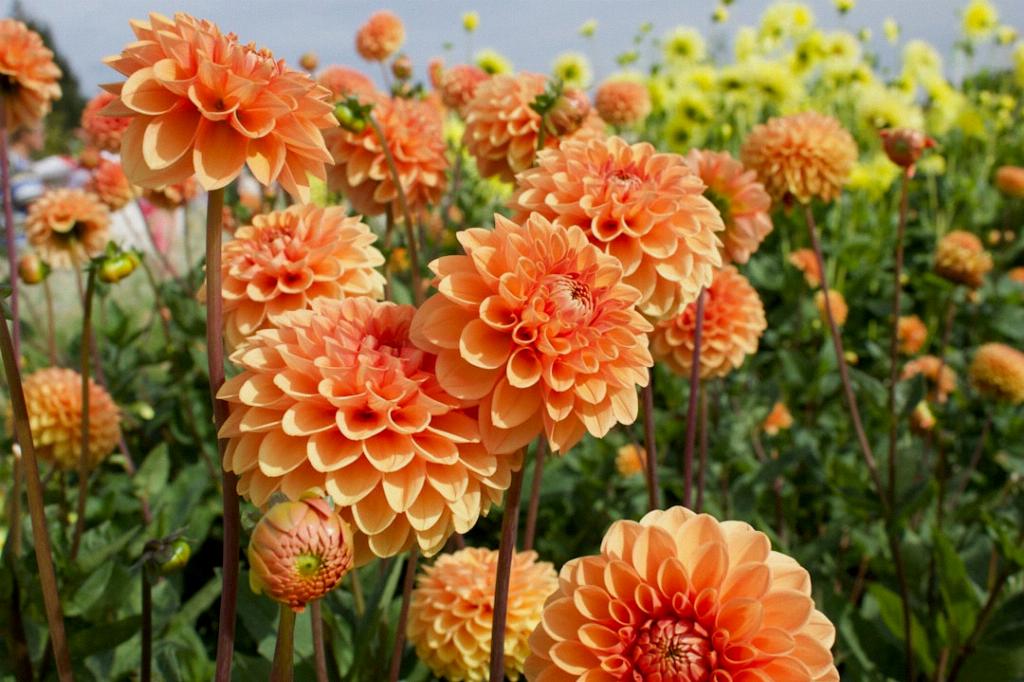For any gardener, discovering that your prized dahlia leaves are being nibbled on can be quite disheartening. It can feel like a mystery trying to figure out what’s behind this seemingly targeted attack on your beautiful blooms. However, fear not, as there are several common pests known for making a meal out of dahlia leaves, with slugs and snails often topping the list.
Slugs and Snails: Notorious Dahlia Leaf Munchers
Slugs and snails are notorious for their love of dahlia foliage, particularly during the early stages of growth when the leaves are still soft and tender. These slimy pests thrive in moist environments and can quickly wreak havoc on your plants if left unchecked. To combat their destructive ways, it’s important to keep the soil surface as dry as possible, as this makes it less inviting for these voracious eaters.
Other Common Dahlia Pests and Diseases
While slugs and snails may be the primary suspects in the case of the missing dahlia leaves, there are other pests and diseases that could also be to blame. Keep an eye out for aphids, spider mites, and earwigs, all of which have a penchant for feasting on dahlia foliage. Additionally, fungal diseases such as powdery mildew and botrytis can also cause damage to your plants if left unchecked.
Spotting the Signs of Pest Infestation
One of the key steps in identifying the culprit behind your dahlia leaves’ disappearance is to closely inspect your plants for telltale signs of pest infestation. Look for slime trails left behind by slugs and snails, yellowing or distorted leaves indicating aphid activity, or fine webbing from spider mites. By observing these symptoms, you can narrow down the list of potential suspects.
Preventative Measures to Protect Your Dahlias
Prevention is often the best defense against pest infestations in your dahlia garden. To protect your plants from slugs and snails, consider using barriers such as copper tape around the base of your plants or applying organic slug baits. Encouraging natural predators like birds and frogs can also help keep these pests at bay. For other common pests and diseases, practicing good garden hygiene, such as removing and disposing of infected plant debris, can help prevent future outbreaks.
Organic Remedies for Dahlia Pest Control
If you prefer a more natural approach to pest control, there are several organic remedies that can be effective against common dahlia pests. Neem oil, insecticidal soap, and garlic spray can all help deter aphids, spider mites, and other small pests without harming beneficial insects or the environment. Additionally, introducing beneficial insects like ladybugs and lacewings can provide long-term pest control solutions.
Cultural Practices to Promote Dahlia Health
In addition to pest control measures, adopting good cultural practices can help promote the overall health and resilience of your dahlia plants. Make sure your dahlias are planted in well-draining soil and receive adequate sunlight to encourage vigorous growth. Regularly deadhead spent blooms and remove any damaged or diseased foliage to prevent the spread of pests and diseases.
Monitoring and Early Intervention
Regular monitoring of your dahlia plants is key to catching pest infestations early before they have a chance to cause significant damage. By inspecting your plants regularly and taking prompt action at the first sign of trouble, you can prevent minor pest problems from escalating into full-blown infestations. Remember, early intervention is often the most effective way to protect your dahlias.
Seeking Professional Advice
If despite your best efforts, your dahlia plants continue to suffer from mysterious leaf damage, consider seeking advice from a professional gardener or horticulturist. They can help diagnose the problem, recommend targeted treatment options, and provide guidance on how to effectively protect your plants from further damage. Don’t hesitate to reach out for expert help if needed.
Conclusion: Preserving the Beauty of Your Dahlia Garden
In conclusion, while the discovery of eaten dahlia leaves can be alarming, there are various steps you can take to identify the culprit and protect your plants from further harm. By being vigilant, implementing preventative measures, and utilizing organic remedies, you can help maintain the beauty and health of your dahlia garden. Remember, a little proactive care goes a long way in keeping your plants thriving and pest-free.

